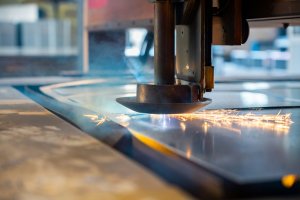Precision Pieces: Creating Custom Jigsaw Puzzles with Laser Cutting

A New Twist on an Old Classic
Jigsaw puzzles have long been a favorite for both kids and adults. They’re a great way to relax, challenge the mind, and bring people together. But what if you could take that classic experience and make it entirely your own? Thanks to modern technology, that’s now possible. Using a laser cutting machine, you can design and build custom puzzles that are personal, creative, and uniquely yours.
Why Choose Laser Cutting for Puzzles?
Traditional puzzles are made with metal dies that stamp out shapes from cardboard. While effective, this method limits creativity—you’re stuck with factory-set designs. A laser cutting machine changes the game. It uses a precise beam of light to cut or engrave materials, allowing for total control over shape, size, and design. That means you can create intricate patterns, unusual piece shapes, and even include custom images or messages. The precision of a laser engraver ensures every cut is clean and exact, down to the smallest detail.
Picking the Right Materials
One of the biggest advantages of laser cutting is its flexibility with materials. While traditional puzzles are usually cardboard, laser cutters can handle wood, acrylic, plywood, MDF, and even certain types of thick paper. Wood is especially popular because it gives the puzzle a solid, premium feel and lasts longer. Before starting, make sure your laser cutting machine supports the material you’ve chosen and that it’s properly set up for clean, safe cutting.
Designing Your Puzzle
This is where creativity comes in. With software like Adobe Illustrator, Inkscape, or CorelDRAW, you can design your puzzle layout digitally. Start by choosing the overall shape of the puzzle—square, circular, or something abstract. Then decide how many pieces you want. The more pieces, the more complex the puzzle. You can use puzzle generator tools to auto-create piece patterns or draw your own for a custom challenge.
Once the piece layout is done, you can add artwork or photos. Many creators use personal photos, hand-drawn artwork, or digital designs. The final step is to separate the cut lines (for the laser cutting machine) from the engraved areas (for the laser engraver). Cut lines are usually set in red, while engraved areas are in black or blue.
Getting the Laser Settings Right
Accuracy is key when working with a laser cutting machine. Each material has different settings for power, speed, and focus. Too much power can burn the edges or warp the material; too little and it won’t cut through. Before running your full puzzle design, always do a test cut on a scrap piece of the same material. This helps dial in the right settings and ensures a clean, smooth result.
When it comes to engraving, settings should be adjusted to create a clear image without over-burning. A quality laser engraver will allow you to control these settings finely, which makes a big difference in the final appearance.
Assembling and Finishing Your Puzzle
After the pieces are cut and engraved, it’s time to assemble your puzzle. This part is fun—it’s your first chance to see the design come to life. If you used wood or acrylic, you may want to lightly sand the edges to remove residue or charring. Some creators also apply a clear finish or sealant to wooden puzzles to protect the surface and give it a polished look.
If you’re making puzzles as gifts or products to sell, consider packaging them in custom boxes or tins. A printed guide image and a small note about the puzzle’s story or design inspiration can add a professional touch.
Why Custom Puzzles Are in Demand
People love personalized items, and puzzles are no exception. Custom puzzles are perfect for birthdays, weddings, anniversaries, and even marketing events. They make memorable gifts and can be tailored to match someone’s interests, hobbies, or milestones. Businesses also use custom puzzles as unique promotional items, branding them with logos or messages that stick in people’s minds.
Thanks to the accessibility of laser cutting machines, even small businesses and hobbyists can create professional-quality puzzles without needing a factory or expensive equipment.
Troubleshooting Common Issues
Even the best tools come with a learning curve. If your pieces aren’t fitting perfectly, it could be due to kerf—the width of the material removed by the laser beam. Always account for kerf in your design settings. If cuts are uneven or inconsistent, double-check the laser lens for dust or misalignment.
Burn marks or smoke stains can be minimized by using masking tape on the material surface before cutting, or by adjusting the air assist if your laser cutting machine has it. These small adjustments can make a big difference in quality.
The Future of Puzzle Making
With the rise of affordable desktop laser cutters and engravers, more people are discovering the fun and business potential of custom puzzles. Whether you’re a DIY enthusiast or an entrepreneur, the tools are now in your hands. With a reliable laser engraver and some creativity, you can turn a simple idea into a product that people love to build and display.
Final Thoughts
Creating custom jigsaw puzzles with a laser cutting machine is more than a fun project—it’s a way to combine creativity, technology, and craftsmanship into something personal and lasting. Whether you’re making a one-of-a-kind gift or launching a puzzle business, laser cutting gives you the precision and freedom to make something truly special.
Newer Articles
- Google Sues to Dismantle BadBox 2.0 Botnet Infecting 10+ Million Android Devices
- High Roller Secrets: VIP Casino Life | Azur Casino DE & Azur DK Slots
- Casino Etiquette: Do’s & Don’ts at the Table | HU AzurSlot & AzurSlot FI Guide

